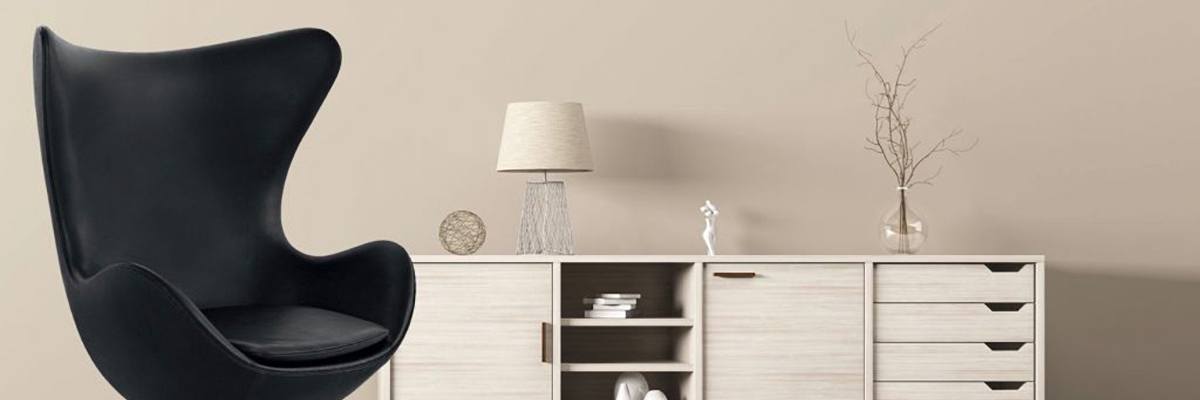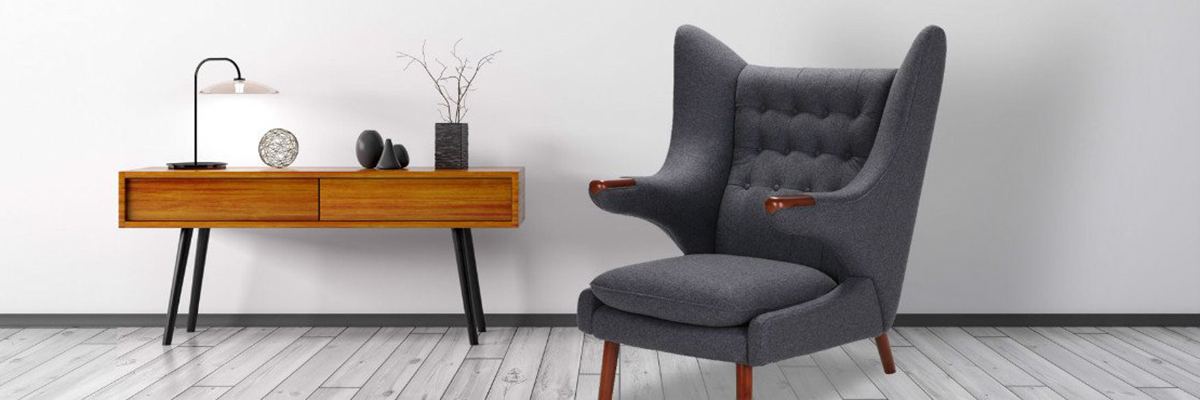Despite being more than half a century old, the vintage appeal of mid century modern style continues to impress with its sleek elegance and minimalism-infused nostalgia. From the sleek lines to sculptural form and from the retro appeal of wood to the utilisation of modern synthetic materials, the aesthetics of mid century style are shaped by a complex interplay of numerous factors and elements that all come together in a perfectly balanced and elegant appeal we all know and love.
But, don’t let this scare you – you don’t have to be a master interior designer to bring a touch of mid century elegance to your home. With just a couple of simple guidelines and key points, you can easily redesign your home so that it’s shining with a warm and familiar mid century vibe without every calling in for a pro.
What makes mid century style so unique?
Mid century style is truly a child of its time. Rooted in the innovative design traditions of the early 20th century, it represents their further development driven by the real demands and needs of the rapidly changing social context of the post-war years. The scarcity of materials combined with rampant urbanization that created the need for housing and furniture that can be quickly built and produced provided the driving force for the stylistic experimentation that resulted in a number of innovative designs that combined style with functionality and comfort. Dark and heavy furniture was replaced by lighter models that relied on sleek and precise lines and simple geometric shapes, while excessive ornamentation was replaced with simple elegance.
At the same time, the social changes resulting in increasing democratisation and focus on the individual fuelled the unique approach to décor so characteristic for the mid century style. On one hand, we can notice the ever increasing interest for minimalism and simple geometric forms combined with appreciation of light and airy aesthetics of open spaces. On the other hand, far from being sterile and dull, these spaces utilized a plethora of colour accents as well as numerous contrasted materials and colours which ensured visual interest of the space.
Choose your accents
You might be having a better idea now of what you are looking to accomplish, but might still be a bit confused about where to start. While there is no general rule here, one of the most common tips is to start with the accents – be it statement pieces of furniture or splashes or colour that will create interest. In doing so you will have to start thinking about space as a whole and its focal points where the statement pieces might look the best. At the same time, by considering the exact type of accent furniture, you will begin having a better idea of where to start. Even if you go down the other route and start with colour accents, you will still have a starting point for your colour scheme and the roughest idea of how that colour should be used throughout the room.

Find functional support pieces
Once you got your accent piece ready (or at least planned), start thinking about your functional demands. After all, your space is your home, not a museum, so your personal needs and habits should still be the first priority. On top of it, mid century modern style is marked with a focus on pragmatic functionality, so you cannot go wrong here either way. Think of whether you need a TV stand – maybe you’re not a fan of watching TV? So, this means that you will have more space for something else. Maybe you need a dining table? Or a coffee table? Feel free to go for those pieces that will meet your demands.

Develop a colour scheme and lighting plan
Choosing a colour scheme early on will save you a great deal of troubles once you start actually purchasing your furniture. The choice of upholstery or type of wood should primary be determined by your preferred chromatic profile so that the furniture you get fits in flawlessly with your overall décor and aesthetic of your home. Similarly to this, lighting solutions should ideally be planed early on so that you can make sure that your furniture arrange will match the lighting architecture.
Don’t be afraid of bold colours
Mid century style is often considered to be rooted in simplicity and subtlety. While this is true to a significant extent, you shouldn’t be afraid to add some bold colour accents, be it on the walls or through the colour of your furniture and other interior design elements. However, you should be careful not to overdo it.
Combine different textures and materials
The nostalgic retro elegance of mid century style wouldn’t be what it is without stylish wooden details that put emphasis on the raw beauty of wood. So, this is one texture that will always be an absolute hit. At the same time, don’t hesitate to throw in some other materials that will contribute to the overall visual interest of the space. Natural options such as rock and textile are just as popular as more contemporary plastic, glass or metal. Be sure to mix and match different stylistic expressions, but don’t overdo it. Neither do you need your home to become too cluttered with stylistic details, nor should you try to tick every box on the materials diversity list. Keep it subtle and stylish and if you have no real need for, let’s say rock, don’t use it.
Accessories
When it comes to décor accessories, mid century modern style is highly versatile and there are many options that will match the aesthetic flawlessly. House plants are a very popular option as the lush green can create a lovely, yet incomplete contrast to ever-present wooden elements. Modernist paintings and sculptures are also very popular, but be sure to keep those elements moderate to prevent an overly cluttered feel and ambience. Finally, never underestimate the stylistic impact of throws, carpets, curtains and sheepskins. These décor elements can be especially impactful, but just like with everything else, don’t overdo it or your mid century masterpiece will quickly turn into boho-chic-like mess.
